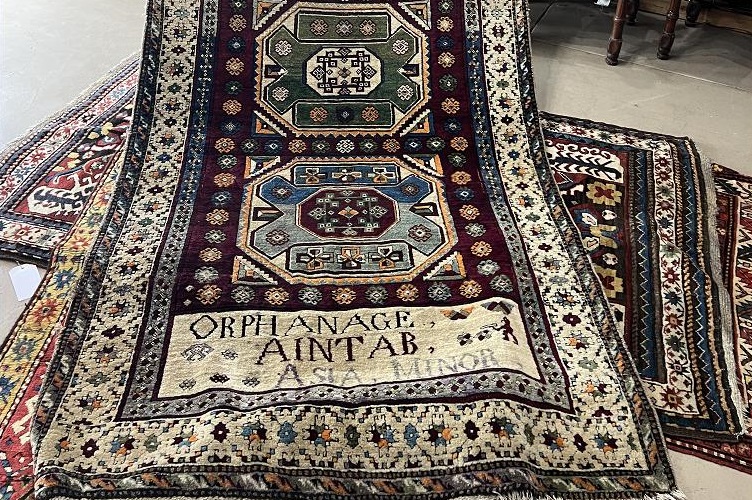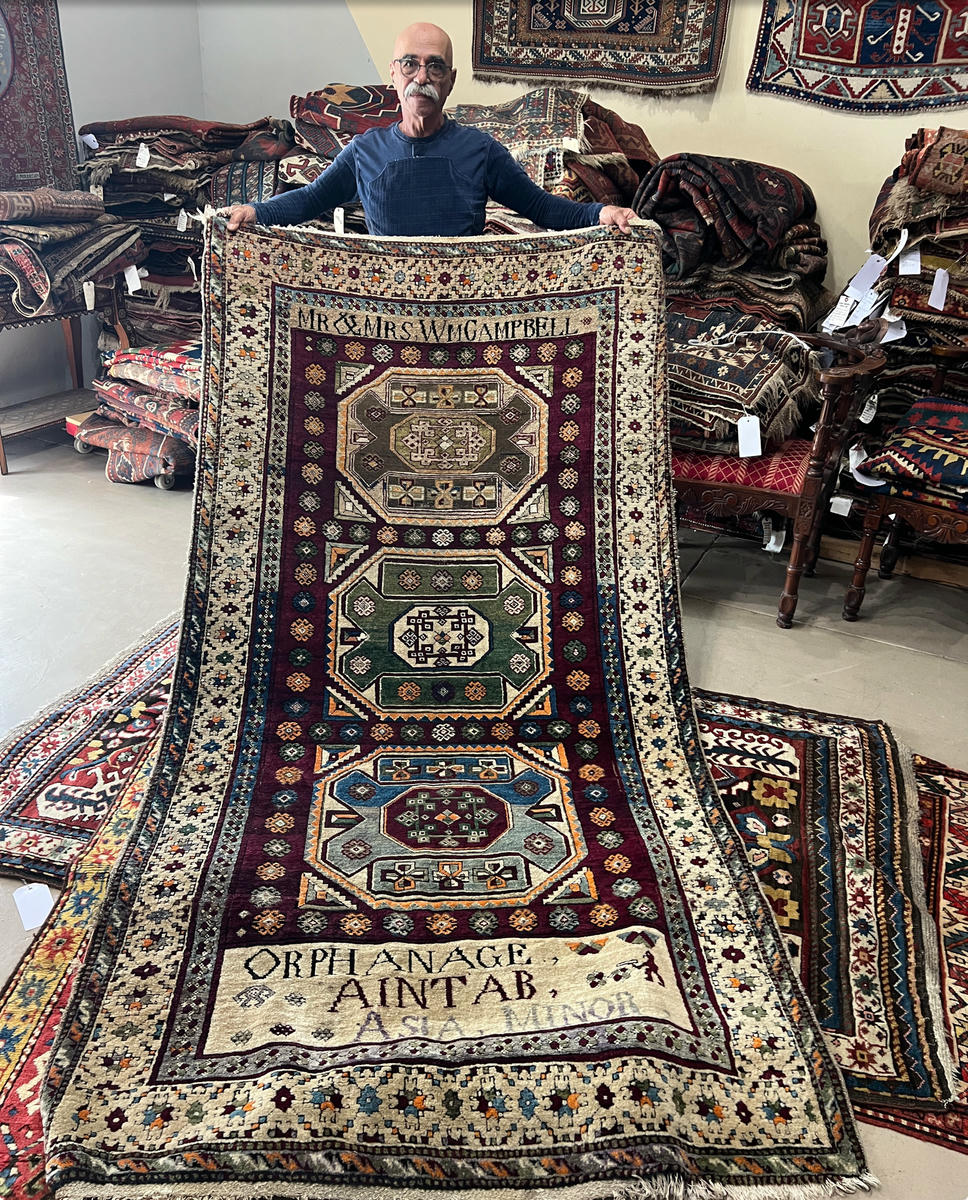Remembering that we are weavers


TALİN SUCİYAN
“To weave a traditional carpet takes a year and has a seasonal rhythm. What does this mean? At the beginning of spring, the sheep must be sheared. In the middle of winter, shearing is not possible. That means in early spring, when the weather warms, the snow melts, the streams and rivers fill with water, the wool that has been shorn will be washed in the flowing water. Summer arrives. The washed wool needs to be combed and evened out. The family’s daughter takes the sheep out to pasture. It’s a relatively easier task. The men work in the fields, doing the heavier labor. Each household has 10–15 sheep. The girl takes the combed wool, the sheep, and her spindle, and within a day, while grazing the sheep, she also spins the wool. Autumn comes, fruits ripen, their peels are mature, their colors saturated, and with them the wool will be dyed. Those fruits don’t exist in midwinter, and in midsummer the fruits are not yet ripe — there is no pigmentation yet. These are traditional kinds of knowledge, passed down from generation to generation. Winter arrives, snow falls, outside is cold. All of summer’s and autumn’s products have been brought inside, the wools have been dyed, the yarns are ready, and there is no work left to do outdoors. The stove burns inside, women sit and weave the carpet. Until the next spring…”
Hratch Kozibeyokian was born into weaving. His father learned carpet weaving from the surviving women weavers of Kaghtagayan in Aleppo. In 1977, Hratch came from Beirut to California, where he continued the profession of carpet restoration with his father. He lectured on the art of Armenian carpet weaving at the Department of Armenian Studies at California State University, Northridge. Living today in the hills of Los Angeles, Kozibeyokian is one of the most important living carpet experts; his specialty is Armenian carpets.
In Los Angeles, Hratch has created a surreal world reminiscent of Cilicia’s mountainous geography — with its animals, plants, and carpets. Among the white doves and fruit trees, the most precious possessions of his hilltop home are the carpets. Kozibeyokian says Armenian carpets have a secret language, and that a lifetime is not enough to understand it. “Armenian carpets are full of abstract symbols. I’ve been working on Armenian carpets for more than 50 years, and I believe that the symbols they used in weaving existed even before they had an alphabet. Such abstract, symbolic knowledge naturally arose from being an agrarian people, peasants. They needed to know when to sow, when to harvest, to follow the phases of the moon… When you look at Persian carpets you see figures and flowers; there is figurative art, not hidden knowledge. Armenians, through the use of ideograms in their carpets, expressed themselves and told their autobiographies.”

When Hratch began to take carpets from his collection and “read” their stories one by one, I realized how deprived we are of such fundamental knowledge, and how no amount of listening would ever feel enough. He would look at a single carpet and see an entire lifetime. Beyond that, he could even estimate the weaver’s experience and age. “When we look at the back of a carpet, its weaving pattern, the number of threads, the way it was finished — all of these tell us where and when the carpet was woven. By examining the weaving technique, we can also understand the weaver’s experience and age. In fact, by looking at a carpet, we can read a family’s history: how many children they had, whether their children were married… In other words, the weaver weaves their own life story.”
The 1920s became the years when Armenian women could no longer weave their lives into carpets. This deep-rooted transmission of knowledge from generation to generation was interrupted; the weaving skill was taken from the hands of Armenian women. What followed was industrialization, survival, and cheap labor.
“Especially in the case of Armenian carpets, in the 1920s this tradition came to a halt in the Soviet Union. Those who knew how to weave were gathered and made to weave carpets in workshops. After the 1920s, in the Middle East, it was only those who had survived in the Kaghtagayans who still knew how to weave. The carpets produced until the 1920s no longer exist today. That tradition ended both in Soviet Armenia and in Turkey.”
It is often forgotten that Armenians were peasants. When Armenians are spoken of, the story is told as though they existed only in Istanbul. Yet Armenians, being the autochthonous and settled people of the South Caucasus and Northern Mesopotamia, knew the plants, soil, minerals, and climate (kawar) intimately. For them, as Hratch describes, weaving was as natural as the cycle of the seasons. The fact that today we hardly know, or not at all, this art and the language of carpets is just one reflection of how we have been deprived of the most basic knowledge of life.



